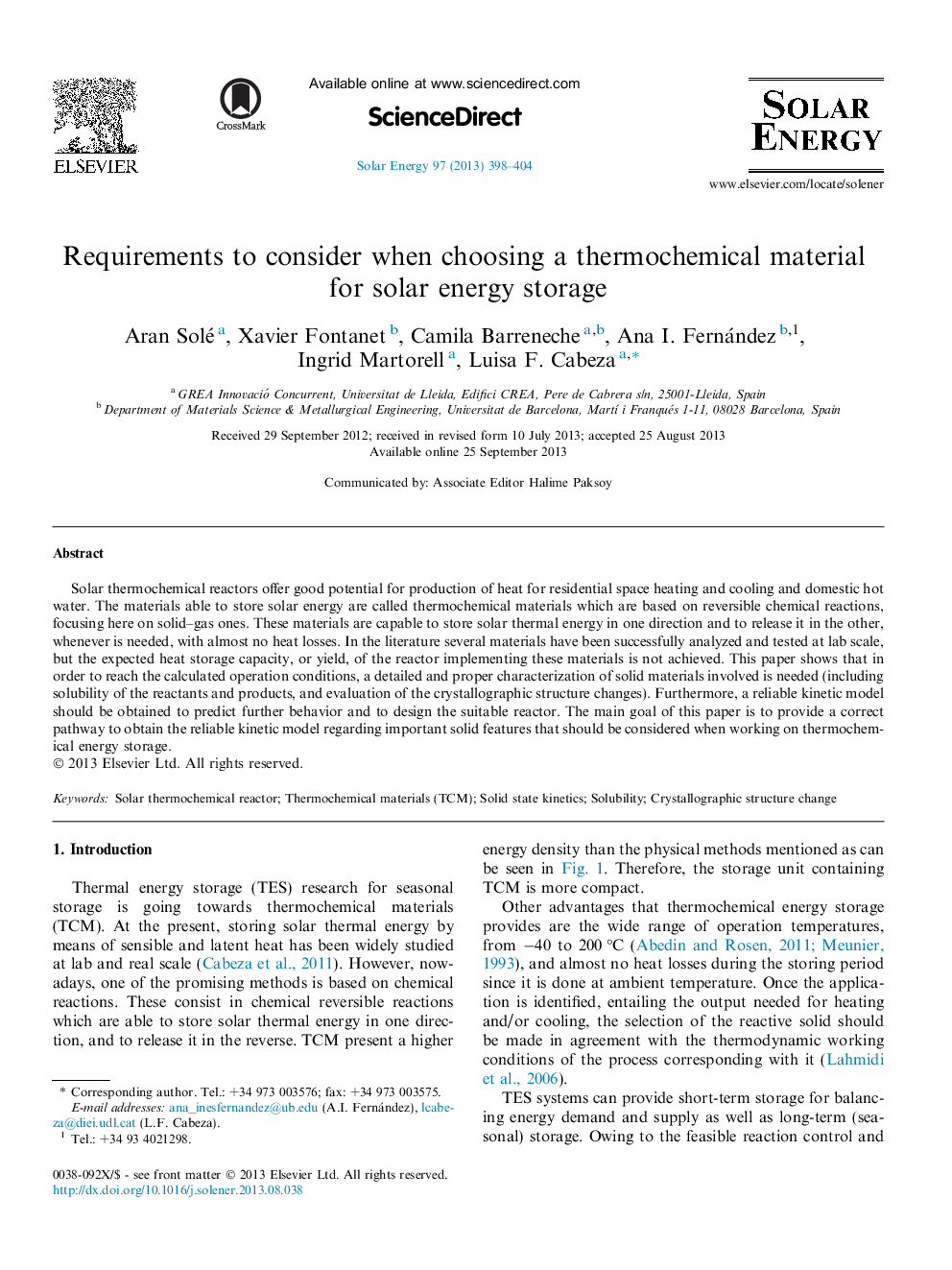| Article ID | Journal | Published Year | Pages | File Type |
|---|---|---|---|---|
| 1550362 | Solar Energy | 2013 | 7 Pages |
•Characterization of the solar TCM is necessary to achieve the expected storage capacity of the reactor.•A high TCM solubility leads to less durability.•Crystallographic structure changes have high influence in the kinetics of the chemical reaction.•Simulations and solar thermochemical reactor are kinetic model strong dependent.
Solar thermochemical reactors offer good potential for production of heat for residential space heating and cooling and domestic hot water. The materials able to store solar energy are called thermochemical materials which are based on reversible chemical reactions, focusing here on solid–gas ones. These materials are capable to store solar thermal energy in one direction and to release it in the other, whenever is needed, with almost no heat losses. In the literature several materials have been successfully analyzed and tested at lab scale, but the expected heat storage capacity, or yield, of the reactor implementing these materials is not achieved. This paper shows that in order to reach the calculated operation conditions, a detailed and proper characterization of solid materials involved is needed (including solubility of the reactants and products, and evaluation of the crystallographic structure changes). Furthermore, a reliable kinetic model should be obtained to predict further behavior and to design the suitable reactor. The main goal of this paper is to provide a correct pathway to obtain the reliable kinetic model regarding important solid features that should be considered when working on thermochemical energy storage.
